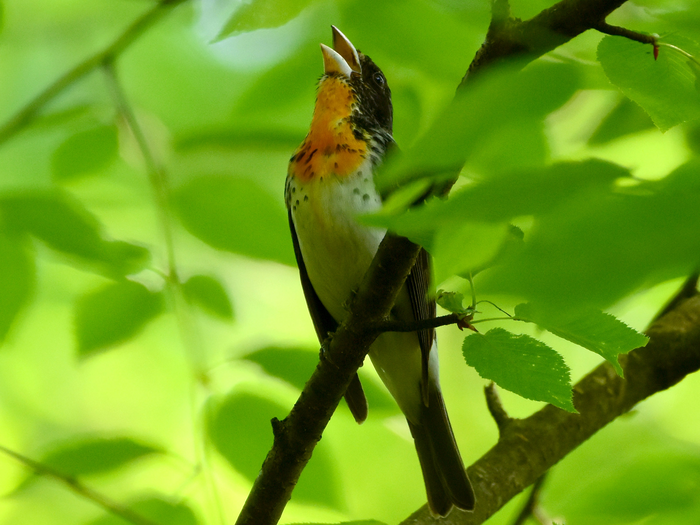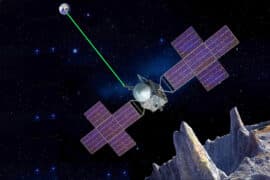
Rare hybrid songbird traced to two very different species
Hybrids are rare in nature. Many mechanisms, including genetic, behavioral and physiological, usually prevent two different species from reproducing successfully. But in June of 2020, Stephen Gosser, a self-described “diehard birder,” identified an unusual bird out in the woods of Western Pennsylvania. It sang like an elusive and beautiful scarlet tanager (Piranga olivacea) but looked more like a rose-breasted grosbeak (Pheucticus ludovicianus). Both these species are found in the area, but they have different habitat preferences. Gosser immediately took some photographs and then called for a team from the National Aviary in Pittsburgh to help clarify his conundrum.
The ornithologists helped catch the strange bird and took a blood sample to use for DNA analysis. Researchers, led by a team from Penn State, then used a variety of different methods, including low-coverage whole-genome sequencing, analysis of vocalizations, and inferences from natural history, to investigate the unusual bird.
Their results, published in the journal Ecology and Evolution, show that this was indeed a hybrid bird, formed as a result of reproduction between a male scarlet tanager and a female rose-breasted grosbeak. Although hybridization between bird species is not uncommon, this usually takes place between closely related species. In contrast, the new bird is the first record of hybridization between these two species that are from lineages that diverged more than 10 million years ago.
“I love this story, because it starts with a little mystery and ends with a surprising discovery,” said David Toews, lead author of the study and assistant professor of biology at Penn State.
The researchers have no idea how the two parental birds managed to breed, as tanagers typically hide away in the canopy cover of mature forests while rose-breasted grosbeaks are happy out in the open, along the edges of woodlands. Toews explained that the two species have very divergent nesting preferences, making their successful breeding attempt all the more mysterious.
In addition to the DNA analysis, the researchers investigated the acoustic characteristics of the hybrid’s song. It sounded like a tanager when it sang, and this was confirmed by comparison of the bioacoustics of both species. Since songbirds usually learn their calls from the father, this finding implied that the male tanager had been around the nest at least until the offspring had learned to imitate its call.
“Something people may not understand is that when we analyze birdsongs, we’re not actually listening to them. We’re looking at them,” said Toews. “We’re looking at wavelengths of the sound – or the ‘spectrogram’ is a more accurate term – and we’re actually measuring visual components of a soundwave to analyze the song.”
The researchers emphasize the usefulness of using combined evidence from visual, bioacoustic, and genetic analyses to confirm that the bird was indeed a hybrid and that the parents were a rose-breasted grosbeak and a scarlet tanager. They stress that this is a straightforward method that can be used effectively to assign ancestry for any putative hybrid individuals, given that whole genome sequences are now available for more and more bird species.
“We used the same tools that we’ve used to identify other hybrids, but we typically have more ambiguous answers that are a bit more esoteric,” said Toews. “In this case, we identified the species. We know who the parents were and we have a somewhat satisfying conclusion at the end. I find this story resonates with more than just your average ornithological nerd like myself.”
Although the hybrid was judged to be a healthy male at the time of its detection and capture, a thorough search for it on the same territory the following breeding season came up negative. It will never be known whether this unusual hybrid was able to pass its genes on to future generations.
Image Credit: Stephen Gosser
Check us out on EarthSnap, a free app brought to you by Eric Ralls and Earth.com.
—
By Alison Bosman, Earth.com Staff Writer












